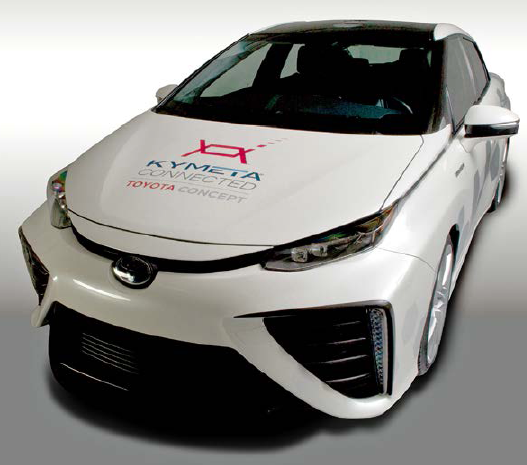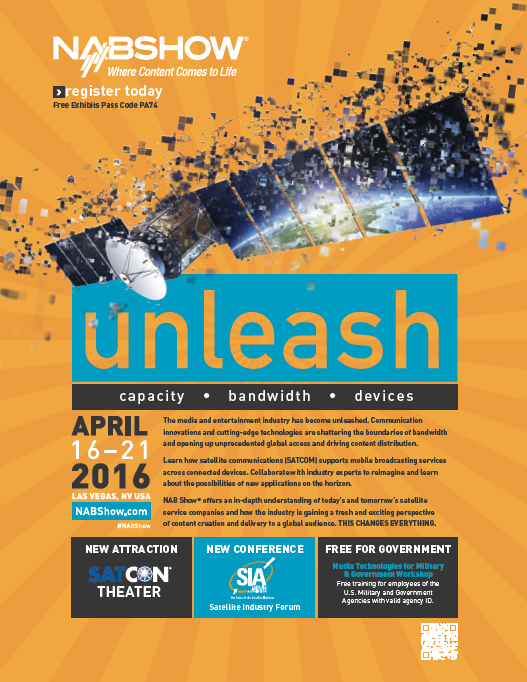Kymeta and Toyota are teaming up to cross an overpass—an overpass away from the technical limitations of using the current cellular network for connected car, and into a world that delivers an unprecedented value in capacity, coverage, security and cost.

The Kymeta Connected Toyota Concept vehicle seeks to provide a first-of-its-kind connected experience to every vehicle, regardless of location or speed, and at a fraction of the cost of today’s cellular systems.
Who Is Kymeta?
Dr. Nathan Kundtz is the founder, CEO, President, and mastermind behind Kymeta. An innovator in the field of metamaterials, Dr. Kundtz is frequently cited for his research at Duke University on metamaterials and the development of novel design techniques—such as transformation optics—to meet real-world needs.
The success of his work has ultimately led to the formation of Kymeta Corporation. Since 2012, Kymeta has made incredible technological leaps in the field of metamaterials. It has culminated the power of its mTenna™ technology for key partners, such as Toyota, to provide a low maintenance, inexpensive and incredibly powerful antenna solution that can be embedded into the roof of a car.
Solving The Cellular Network’s Limitations
When you’re looking at data consumption trends, the need for more is the one constant. This will continue to be true into the foreseeable future as well, as high-quality content becomes more pervasive. What we watch and experience will become richer, and thus require more space.
Twenty years ago, if you used a dial-up modem to email your friend a ‘selfie’ taken with today’s smartphone, it would take at least 40 minutes to upload. Today, the average connection speed is about 1,200 times faster, allowing the same ‘selfie’ to upload in one second. In tomorrow’s world, the customer will only expect more – demanding quicker access to data and the ability to consume increasingly richer multimedia.
Why is it that today you can get such fast speeds in your house or apartment but not to your car? This is because your house is in a fixed place, connected by wires and fiber optic cables.
Our challenge, and the reason we’ve teamed up with Toyota, is that we’re looking to connect things that do move. It is obvious that you cannot do this with wires and cables, but what isn’t obvious is how current technology and wireless availability will meet the projected demand.
Some people believe that current cell tower infrastructure can meet the demand for data to your car—but we disagree. We’re certain the wireless spectrum being used by cellular towers will not allow enough space to connect moving things.
More Spectrum, More Possibilities
When embedded into the roof of a car, Kymeta gives you and your automobile access to data that exceeds the speeds going into your home today. Coverage for every day consumers of a connected car will extend beyond local LTE hotspots for uninterrupted global coverage.
By using multicast technologies for economy and a natural resource that is highly limited on the ground but widely available by satellite—called frequency spectrum—it’s possible. Massive amounts of data can be delivered at much faster speeds to global components.
Cell phones today can only ‘see’ one cell tower at any given time, but a Kymeta mTenna™ can ‘see’ up to 300 satellites, in various orbits, on the same frequency. Moreover, today’s 4G/LTE connected car can only offer unicast solutions for software or firmware update—meaning only one update can be made at a time. Kymeta provides a solution for multicast which can update a fleet of cars on the road at one time.
Kymeta taps into this ‘fixed spectrum’ that was previously only available to the large, ‘esthetically challenged’ dishes most people recognize as providing satellite TV to their homes. However, by using Kymeta’s mTenna™ technology, which creates a flat, lightweight, mobile, nimble and essentially invisible antenna, we now have the ability to access this ‘fixed spectrum’ while on the move.
The mTenna™ embedded in the Kymeta Connected Toyota Concept vehicle aims to provide a terabyte of data, per month, per car. This amount easily allows plenty of data capacity for rear-seat infotainment, telematics, software updates and autonomous driving.
Additionally, the beauty of a using Kymeta’s mTenna technology is that it’s future proof. When you don’t use mechanical components for an antenna, it has the ability to be compatible with future systems like LEO and MEO constellations to deliver huge increases in data to the car, even before the systems and constellations are off the drawing board. This is a significant point—it’s like saying that the flip-phone you purchased in 2006 is completely compatible with and would support the through put of the 4G system in 2016.
Our vision is to see every car on the road equipped with Kymeta’s breakthrough technology. Access to satellite connectivity will become the norm. Cars will be equipped with software defined systems and have the flexibility to set capacity levels depending on individual needs.
Just-in-Time Capacity
The flip side of space capacity is vehicle capacity. With Kymeta’s tiling technology, antenna numbers and sizes can be mixed and matched to meet regional, market and price-point requirements.
Think of the Kymeta system like Legos™—if more capacity is needed, more blocks can be added. In the Kymeta Connected Toyota Concept vehicle, one 15.24 cm (6 inches) antenna will be equipped with the minimal receive only capabilities along with options to add more solar panels for stronger transmission power. Just-in-Time capacity means that one system can deliver maximum manufacturing flexibility to meet different market conditions.
The Overpass
It was only 20 years ago that dial-up was king. Now, think of how you live today—consumption levels have skyrocketed and the cellular network can no longer sustain its demands. A major proof point is evaluating connectivity speeds at stadiums or major tradeshows where data levels drop significantly due to an uptick of devices fighting for available spectrum.
If you pick up any magazine or literary article about the autonomous car, you’ll notice a huge focus on mobility. Experts will tell you that the data needed to enable truly autonomous cars can’t even begin to be carried over today’s LTE networks. By working closely with satellite industry partners, Kymeta is able to deliver speeds and capacity more than 100 times what your monthly cellular plans can offer.
Once we accept that data consumption demands will only continue to climb, and that connected cars will need an exponentially larger amount of data to operate, the only practical way to deliver enough bandwidth to satisfy that data demand is through satellite connectivity.
This is precisely why Kymeta and Toyota have come together. We’ve partnered to create an overpass to provide a fast track to the future of the connected car.
kymetacorp.com/


